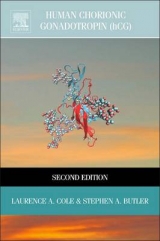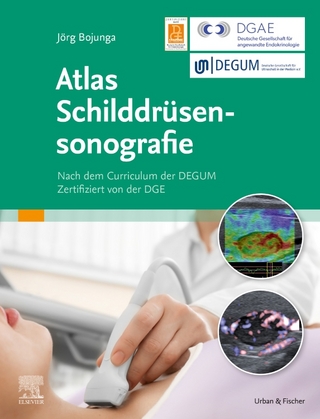
Human Chorionic Gonadotropin (hCG)
Elsevier Science Publishing Co Inc (Verlag)
978-0-12-384907-6 (ISBN)
- Titel erscheint in neuer Auflage
- Artikel merken
Human chorionic gonadotropin (hCG) is produced during pregnancy by the embryo. It promotes progesterone production by corpus luteal cells. It also functions in pregnancy to promote angiogenesis in uterine vasculature, it immuno-blands the invading placental tissue so it is not rejected by the maternal uterine tissues, promotes the growth of the uterus in line with the growth of the fetus, promotes the differentiation of growing cytotrophoblast cells, promotes the quiescence of contractions in the uterine myometrium during the course of pregnancy, and also has function in growth and development of fetal organs.
The book describes the detailed biology, clinical chemistry, and clinical perspectives of hCG and associated molecules, and examines hCG, hyperglycosylated hCG and hCG free ß-subunit, 3 separate and independent molecules with totally sovereign physiological functions.
Dr. Cole has served on the journal editorial board from 1994-2001 as the Editor of "Trophoblast Disease Update". He has written more than 100 articles on hCG structure, physiology and immunoassay and on clinical applications of hCG or hCG-related molecules. He has a 1.17 FWCI in the Medicine category of SciVal where he has published throughout the various disciplines and maintains an average of 12.6 citations per article from 2009-2014. He has experience with international, single, and institutional collaboration. Awards and recognition for Dr. Cole include the Institute for Anticancer Research, Biannual Prize for best research; American Association for Clinical Chemistry, Most Outstanding Research Contributor to Clinical Chemistry Prize; Gynecology Oncology, Outstanding Speaker Award; and International Society for Study of Trophoblastic Disease, Gold Medal for most outstanding research.
INTRODUCTION Chapter 1: THE EXPANDING WORLD OF hCG
Robert Hussa
Chapter 2: HISTORY AND INTRODUCTION TO HUMAN CHORIONIC GONADOTROPIN (hCG): ONE NAME FOR AT LEAST THREE INDEPENDENT MOLECULES Laurence Cole
Chapter 3: INTRODUCTION TO PREGNANCY IMPLANTATION, VILLOUS FORMATION, AND HEMOCHORIAL PLACENTATION Laurence Cole
GENETICS, SYNTHESIS, SECRETION, STRUCTURE, AND DEGRADATION OF hCG
Chapter 4: THE MOLECULAR GENETICS OF hCG Stephen Butler
Chapter 5: STRUCTURE, SYNTHESIS, SECRETION, AND FUNCTION OF hCG Laurence Cole, PhD and Stephen Butler
Chapter 6: COMPARISSON OF STRUCTURES OF hCG AND HYPERGLYCOSYLATED hCG Laurence Cole
Chapter 7: STRUCTURES OF FREE a-SUBUNIT AND FREE ß-SUBUNIT Laurence Cole
Chapter 8: GLYCOBIOLOGY OF hCGAkira Kobata
Chapter 9: DEGRADATION PRODUCTS OF hCG, HYPERGLYCOSYLATED hCG, AND FREE ß-SUBUNITLaurence Cole
Chapter 10: THE THREE DIMENSIONAL STRUCTURE OF hCGLaurence Cole
BIOLOGICAL FUNCTION OF hCG
Chapter 11: PARADIGM SHIFT ON THE TARGETS OF hCG ACTIONS
CV Rao
Chapter 12: THE hCG RECEPTOR
Laurence Cole and Stephen Butler
Chapter 13: BIOLOGICAL FUNCTIONS OF HYPERGLCOSYLATED hCGLaurence Cole
Chapter 14: BIOLOGICAL FUNCTION OF THE FREE BETA SUBUNIT: EXPRESSION AND TREATMENT TARGET IN CANCER
Steven Butler and Ray Iles
CLINICAL APPLICATIONS
Chapter 15: USE OF hCG IN REPRODUCTIVE DYSFUNCTIONCisco Byrn
Chapter 16: hCG IN THE IVF CLINICErvin Jones, Chapter 17: ILLICIT USE OF hCG IN DIETARY PROGRAMS AND USE TO PROMOTE ANABOLISM Laurence Cole hCG TESTS
Chapter 18: ANTIBODYS FOR INTACT hCG, TOTAL hCG, FREE SUBUNITS, GLYCOSYLATION VARIANTS, AND hCG FRAGMENTSLaurence Cole
Chapter 19: QUANTITATIVE hCG ASSAYSLaurence Cole
Chapter 20: FALSE-POSITIVE hCG ASSAYS Laurence Cole
Chapter 21: SPECIFICITY OF DIFFERENT hCG ASSAYSLaurence Cole
Chapter 22: POINT-OF-CARE PREGNANCY TESTS Laurence Cole Chapter 23: OVER-THE-COUNTER PREGANCY TESTS Laurence Cole Chapter 24: hCG STANDARDS Ulf Stenman TEST APPLICATIONS
Chapter 25: BACKGROUND hCG Laurence Cole Chapter 26: PREGNANCY TESTINGLaurence Cole Chapter 27: PREDICTING SPONTANEOUSLY ABORTED (SAB) PREGNANCIES Laurence Cole
Chapter 28: hCG, HYPERGLYCOSYLATED hCG, AND FREE ß-SUBUNIT IN PREDICTING DOWN SYNDROME PREGNANCIES AND PREECLAMPSIA Laurence Cole
Chapter 29: hCG IN MONITORING GESTATIONAL TROPHOBLASTIC DISEASES
Laurence Cole
Chapter 30: USE OF HYPERGLYCOSYLATED hCG AS A UNIQUE MARKER OF GESTATIONAL TROPHOBLASTIC NEOPLASMS
Laurence Cole and Carolyn Muller
Chapter 31: PITUITARY hCG AND FAMILIAL hCG Laurence Cole Chapter 32: hCG, FREE ß-SUBUNIT AND ß-CORE FRAGMENT AS MARKERS OF MALIGNANCIES Laurence Cole BASIC METHODS
Chapter 33: hCG AND HYPERGLYCOSYLATED HCG PURIFICATION FROM SERUM, URINE, AND CULTURE FLUIDS
Laurence Cole
Chapter 34: DISSOCIATION, DESIALYLATION, AND CLEAVAGE OF HCG
Laurence Cole
Chapter 35: hCG AND FREE ß-SUBUNIT PRODUCING CELL LINES
Laurence Cole EVOLUTION, SUMMARY AND THE FUTURE
Chapter 36: EVOLUTION OF hCG, EVOLUTION OF HUMANS, EVOLUTION OF HUMAN PREGNANCY DISORDERS AND CANCERLaurence Cole
Chapter 37: SUMMARY: hCG A REMARKABLE MOLECULELaurence Cole
Chapter 38: hCG AND THE FUTURE Laurence Cole
| Sprache | englisch |
|---|---|
| Maße | 152 x 229 mm |
| Gewicht | 740 g |
| Themenwelt | Medizinische Fachgebiete ► Innere Medizin ► Endokrinologie |
| Studium ► 1. Studienabschnitt (Vorklinik) ► Physiologie | |
| Naturwissenschaften ► Biologie ► Biochemie | |
| Naturwissenschaften ► Chemie ► Organische Chemie | |
| ISBN-10 | 0-12-384907-1 / 0123849071 |
| ISBN-13 | 978-0-12-384907-6 / 9780123849076 |
| Zustand | Neuware |
| Haben Sie eine Frage zum Produkt? |
aus dem Bereich



